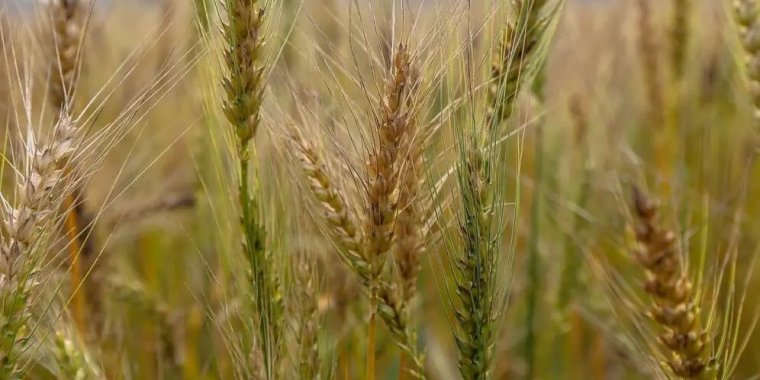| News / Science News |
Scientists develop wheat types to resist heat, drought
Australian scientists have identified a novel combination of genetics that may help wheat survive in hot and dry conditions, thereby increasing yields and assisting farmers to adapt to climate change-induced heat and drought stress.

New wheat varieties developed in Australia can be sown deep to access water in the soil. Photo: Shariot Sharif
Researchers have identified three novel alternative dwarfing genes that enable wheat seeds to draw moisture stored twice as deep from the soil than current varieties.
“We have genetics that can allow us to sow earlier and deeper up to 120 millimetres while keeping the plants short and allowing for very long coleoptile, which is the shoot that grows from the seed to the soil surface,” says Greg Rebetzke, co-author of the study and chief research scientist at CSIRO Agriculture and Food.
“A coleoptile is like a drinking straw that can push through dry and hard soil, allowing the germinating wheat leaves to emerge above the ground,” Rebetzke explains.
“Long coleoptiles in future wheat varieties can help maintain or increase the yield in hotter and drier environments and provide growers assurance that they can sow deep and will reap a harvest,” Rebetzke tells SciDev.Net. “Even in irrigated fields, as global warming pushes soil temperatures to rise, we will need a long coleoptile for a short germination and emergence of the crop.”
The study estimates that new wheat varieties with longer coleoptiles, coupled with deep sowing, can increase yields by 18 to 20 per cent under historical climate (1901–2020), with benefits projected under future global warming.
“Crop modelling enabled us to integrate field data and understanding of physiology and genetics to predict the yield of the novel wheat varieties with long coleoptile across environments,” Zhigan Zhao, lead author and crop modeller at CSIRO, tells. “This has made it possible to put a dollar value on the benefits of the long coleoptile wheat”.
“Our results highlight the impact of synergy between novel genetics (long coleoptile wheat) and management (deep early sowing) to adapt food production to climate change,” John Kirkegaard, co-author of the study and farming systems agronomist at CSIRO, tells.
Researchers say learnings from this study could be translated to other crops – rice, barley, oats and rapeseed – to improve resilience and reliability of farming in future climates.
“Breeding companies are investigating the use of novel genes to breed new wheat varieties with longer coleoptiles in Australia and through collaborators in the US and parts of Europe,” says Rebetzke.
“The availability of soil moisture at the surface, and also at the root zone, is going to be critical for future food production. The temperature rise, we are already seeing, is increasingly leading to dryness of the soil surface. This will only worsen with climate change, thereby posing a serious problem for global food production,” says Devinder Sharma, food policy analyst and an agricultural expert based in India.
“Developing a new wheat variety, incorporating the novel GAS (gibberellic-acid-sensitive) dwarfing gene, that takes advantage of soil moisture at the sub-surface and enables the plant to germinate when sown at a depth that is twice the normal practice has potential,” Sharma tells.





